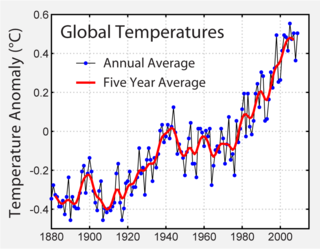Sparky: Politicians Don't Get It!Vice President Cheney can shoot a pal (to threaten him quietly about
Funeralgate and his extramarital affair with U.S. Ambassador to Switzerland
Pamela Pitzer Willeford [1]); And, it's official that recreations of the incident were enacted by George Gongora, a photographer for the
Corpus Christi Caller-Times [2], a writer for Whidbey Island News-Times
[3], and by
Alex Jones, a journalist best known for creating anti-establishment
conspiracy theory writings and documentaries
[4]. All tests seemed to prove that the distance was much closer than the 90ft claimed. Many familiar with quail hunting have also argued that the range was closer
[5], while others, such as forensic expert Jon Nordby, confirm the plausibility of the official reports.
[6]On February 27,
CBS News released the results of a poll conducted after the incident that revealed Cheney's approval rating had dropped to 18%. According to CBS, the hunting incident "appears to have made the public's already negative view of Cheney even more so."
[7]
It's also likely true Cheney would have to commit
bestiality to raise his ratings above the VP who formerly was the most hated -
Spiro T. Agnew. And the idiot still is letting our troops get killed in a phony and preventable
Iraq War.
1.
Bob Cesca: Was Cheney Hiding His Lewinsky?
South Dakota governor signs abortion ban into lawRepublican Governor
Mike Rounds of
South Dakota signed
South Dakota House of Representatives Bill
1215 into law today, banning all
abortions in the state except to save the life of the mother (with no exceptions for rape and incest). Rounds signed the act on
March 6, with the ban due to take effect from
July 1,
2006. However, the ban is likely to face a legal challenge as it contravenes the
Supreme Court's judgement in
Roe v. Wade.
 When another idiot in power decides to make the wombs of all the women in his state property of the state — he has effectively declared women 2ND class citizens — if that high or indeed even still citizens. I think every freethinking woman in South Dakota should start leaving the state as now. And I think the Government of the United States should step in and rescue any woman left behind or be charged with violating their civil rights. They can use the FEMA buses unused from Hurricane Katrina
When another idiot in power decides to make the wombs of all the women in his state property of the state — he has effectively declared women 2ND class citizens — if that high or indeed even still citizens. I think every freethinking woman in South Dakota should start leaving the state as now. And I think the Government of the United States should step in and rescue any woman left behind or be charged with violating their civil rights. They can use the FEMA buses unused from Hurricane Katrina.
I'll take odds are Rounds is doing something "funny" with his four kids. His kind always do.
SCIENCE: Largest mass extinction in 65 million years March 8, 2006 Environmental scientists say they have concrete evidence that the planet is undergoing the "largest mass extinction in 65 million years". Leading environmental scientist Professor Norman Myers says the Earth is experiencing its "Sixth Extinction."
Scientists forecast that up to five million species will be lost this century. "We are well into the opening phase of a mass extinction of species. There are about 10 million species on earth. If we carry on as we are, we could lose half of all those 10 million species," Myers said.
If we do not do more, Myers says, the planet will continue to lose around 50 species per day compared to the natural extinction rate of one species every five years. He projected this rate in the late 1980s to much criticism, but the figure is now widely accepted by scientists. "The whole thing is taking place in what you might call a flickering of an evolutionary eye," said Myers. "It's hard to keep up with unless we damp down on some of the causes of the evolution."
Hotspots

GLOBAL WARMING: Global mean surface temperatures 1856 to 2005
The Australia Museum's Frank Howarth says "There are over 30 extinction 'hotspots' across the globe. He says up to 80 per cent of crucial habitat has been wiped out. Biodiversity hotspots are areas that have more than 1500 endemic plant species and which have lost more than 70per cent of original habitat." Hotspots feature, according to Myers, "exceptional concentrations of species that are found nowhere else in the world."
Evidence shows that insects, which account for more than half the described species on earth, are disappearing faster than birds. "Many areas of Australia's ecosystems depend on the work of insects... we put a lot of effort into looking at these hotspots, about what insects actually occur there, whether their numbers are increasing or decreasing, because they tell us a lot more about some of the high level effects," Howarth said.
Myers argues that we are destroying the Earth’s biodiversity quickly enough to witness the beginning of a mass extinction of species—one of only six such events in the Earth’s history. He says around 30 hotspots contain the last remaining habitats of at least half of Earth’s land surface.
He says more parks and reserves are needed, and while warnings are desperate, he believes the situation can be turned around. "We would be the first generation in the whole of human history since we came out of our caves to tackle a mass extinction head on and cancel it... and if we do, I think people will cheer for us from thousands of years ahead." Myers projects that safeguarding the hotspots would cost one billion dollars per year.
Where are the frogs?

EXTINCT: Golden Toads of Monteverde, Costa Rica was among the first casualties of
amphibian declines. Formerly abundant, it was last seen in 1989.
The Global Amphibian Assessment, an international convention of amphibian biologists, indicated in 2004 that over a third of the world's amphibian species are threatened, making them the most threatened group of animals on the planet. More than 120 species have likely become extinct since the 1980s, and around two-thirds of the South American harlequin frog species vanished in the 1980s and 1990s. The decline of amphibians in protected habitats has puzzled conservation biologists for nearly 20 years.
Recent research suggests that climate change may be driving widespread frog extinctions. Results of a study published in the January 2006 Nature journal reveal how warming alters a fatal skin fungus affecting frogs. The article says hundreds of species around the world are teetering on the brink of extinction or have already become extinct.
"Disease is the bullet that's killing the frogs," said J. Alan Pounds, the study's lead scientist from the Tropical Science Center in Costa Rica. "But climate change is pulling the trigger. Global warming is wreaking havoc on amphibians, and soon will cause staggering losses of biodiversity," he said.
According to the study, rising temperatures favor the chytrid fungus, which seems to kill frogs mostly in cool highlands or during winter—implying that low temperatures make it more deadly. National Science Foundation program director Sam Scheiner said their study "demonstrates the complex nature of global climate change, including how climate affects the spread of disease, and why these must be integrated if we are to understand and reduce threats to species extinctions."
Scheiner says the message goes beyond amphibians: "global warming and the accompanying emergence of infectious diseases are a real and immediate threat to biodiversity and a growing challenge for humankind."
"The Sixth Extinction"

OVERHUNTING: American bison skull heap. There were as few as 750 bison in 1890 from overhunting.
Scientists are warning that by the end of this century, the planet could lose up to half its species, and that these extinctions will alter not only biological diversity but also the evolutionary processes itself. They state that human activities have brought our planet to the point of biotic crisis.
In 1993, Harvard biologist E.O. Wilson estimated that the planet is losing 30,000 species per year - around three species per hour. Some biologists have begun to feel that the biodiversity crisis dubbed the "Sixth Extinction" is even more severe, and more imminent, than Wilson had expected.
Professor Myers and colleague Andrew H. Knoll say that what we do now will define a course for evolution. In their 2001 American Institute of Biological Sciences report, Myers and Knoll forecast that the effects of a Sixth Extinction will leave gene pools so depleted that species may not bounce back. Species such as rodents and cockroaches that have adapted to human environments will dominate.
Niles Eldredge in his paper The Sixth Extinction says that with the high rate of extinction, there is little doubt left in the minds of professional biologists that the biosphere is currently facing a mounting, unprecedented loss of species.
Whilst previous mass extinctions were due to natural environmental causes, research shows that wherever on Earth humans have migrated other species have become extinct. Human overpopulation especially in the past two centuries is said to be the underlying cause of the Sixth Extinction.
Sources
- Sarah Clarke "Earth in grip of mass extinction: scientists". Australian Broadcasting Corporation, March 7, 2006. 9:13pm
- Amanda Hodge "Green belt plants hope for future". The Australian, March 07, 2006
- Sarah Clarke "Scientists call for urgent action over extinction rate". AM - ABC Radio, March 7, 2006
- "Mass extinction of species has begun". Physorg.com, February 23, 2006
- "Climate Change Drives Widespread Amphibian Extinctions". ScienceDaily, January 12, 2006
- Niles Eldredge "The Sixth Extinction". American Institute of Biological Sciences, June 2001
- Norman Myers and Andrew H. Knoll "How Will the Sixth Extinction Affect the Evolution of Species?". American Institute of Biological Sciences, May 2001
Live life now — Fuck those who steal freedoms - Sparks






















